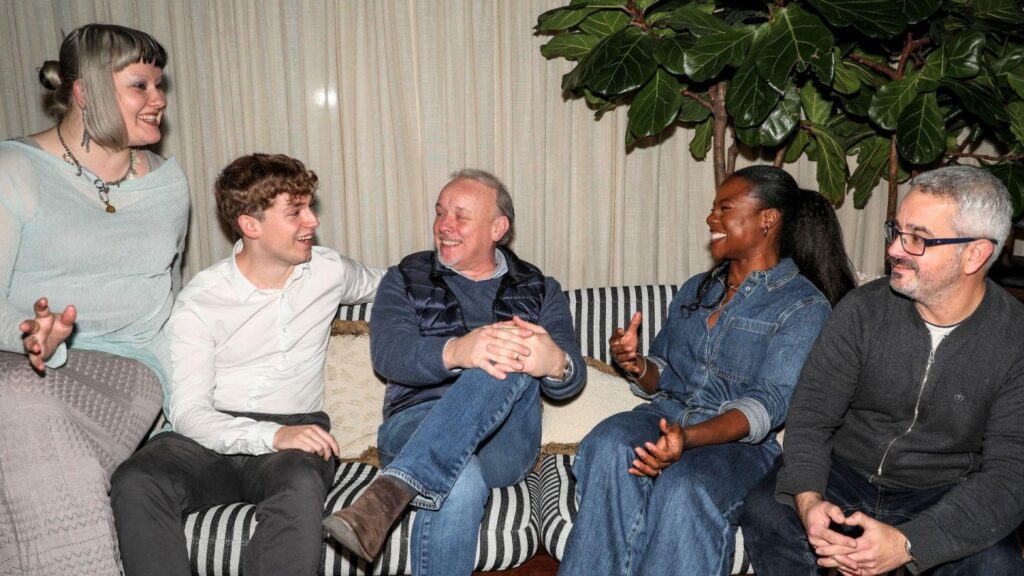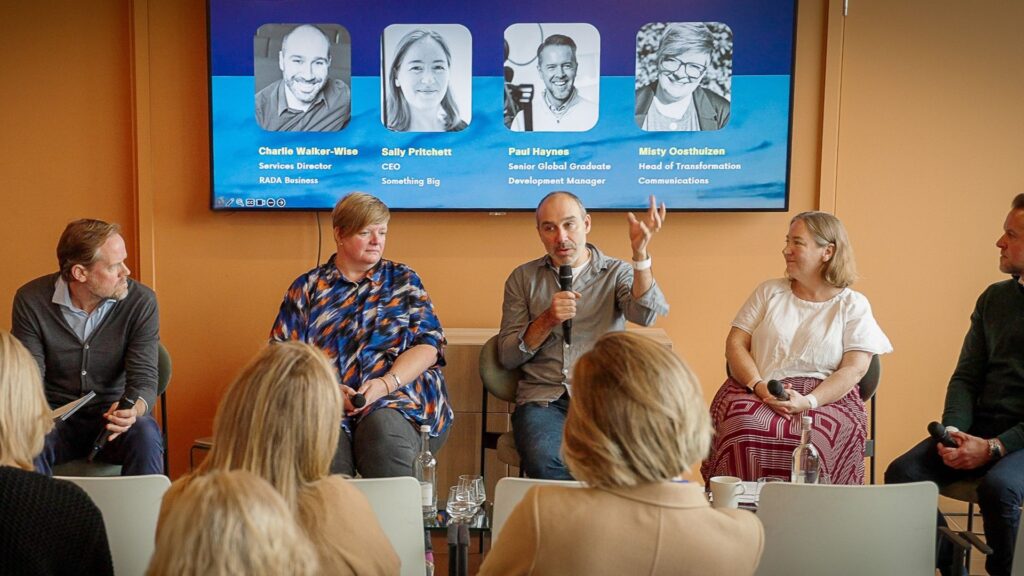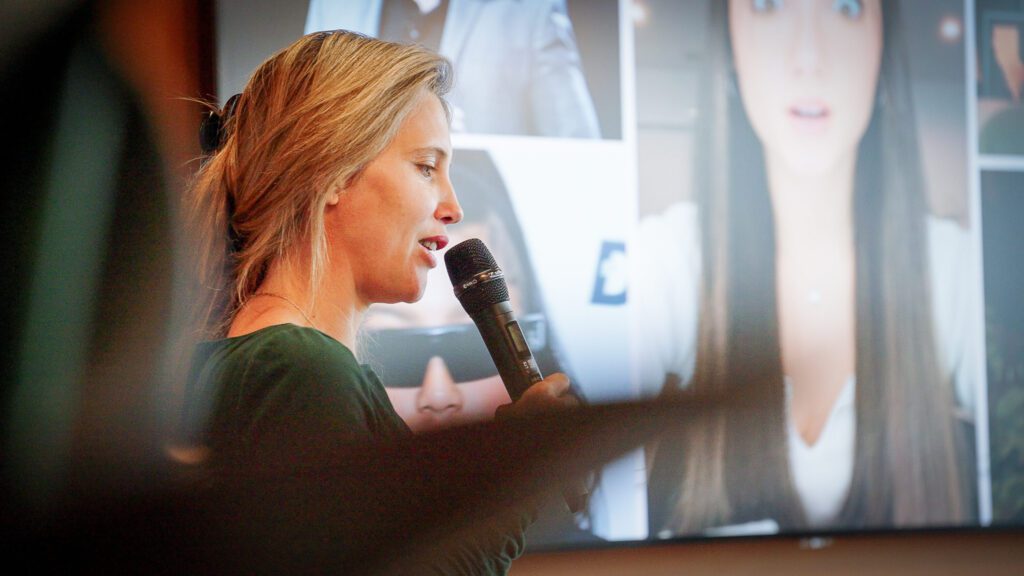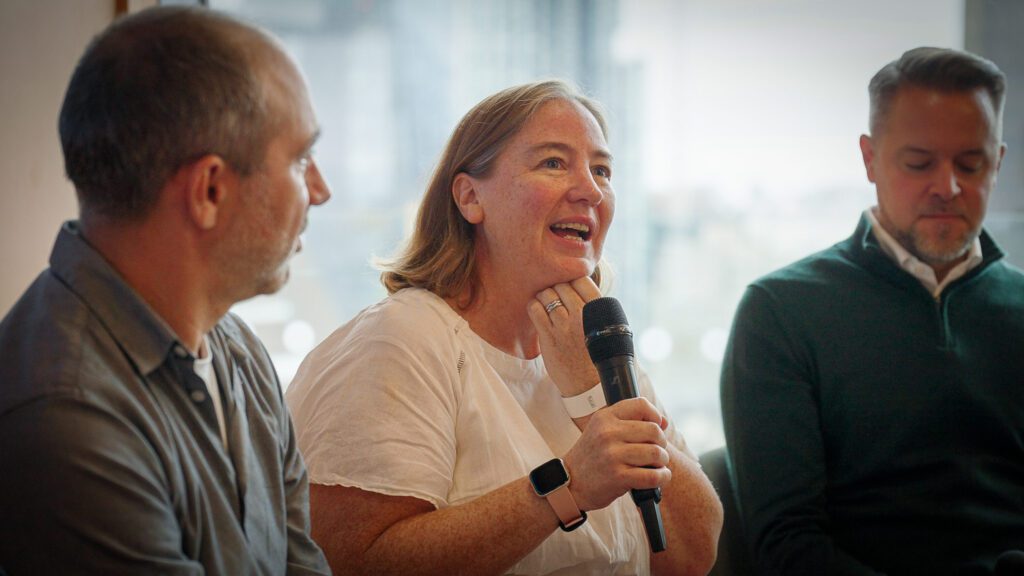Engage and Lead Through Change: How to Communicate with Intention
Why Your Ideas Need SHaPe

Is there a formula for creative thinking? The best creative work happens when the right inputs (Stimulus), mental environment (Headspace), and urgency (Pressure) are in play. Broadsword Creative Director, Martin, details the creative process he has developed to SHaPe ideas and foster the ideal conditions to think creatively rather than relying on brainstorming.
The Creative Paradox: AI vs. Human Ingenuity
“Is AI going to take my job?” It’s the question gnawing at creatives worldwide, feeding into an already fragile sense of imposter syndrome.
The answer, paradoxically, is both “almost certainly” and “not at all.” I call this Quantum Panic Theory—we exist in a world where AI both threatens and enhances creative work simultaneously.
AI can already generate content at an unprecedented speed and cost, but the fact that it can is a uniquely human dilemma. Humans created AI, humans saw the benefits first and the risks second. And that very human optimism—the desire to create, to innovate—is at the core of creativity.
So, instead of fearing AI, what if we focused on the human factors that truly shape creativity? That’s where SHaPe comes in.
The SHaPe Formula: The Blueprint for Creativity
Creativity is often seen as a mystical force—unpredictable and elusive, like a lightning strike. But in reality, creativity isn’t magic; it’s a process that can be nurtured, structured, and optimised. I call this formula SHaPe.
SHaPe stands for Stimulus, Headspace, and Pressure – three essential factors that, when balanced, equal the ideal conditions for innovation. Understanding and managing these elements can mean the difference between groundbreaking ideas and creative stagnation.
Why Creativity Needs Structure
Great ideas don’t emerge in a vacuum—they need the right conditions to grow. Too often, businesses treat creativity as something that happens spontaneously, hoping for a moment of inspiration in a brainstorming session. But the best creative work happens when the right inputs (Stimulus), mental environment (Headspace), and urgency (Pressure) are in play.
The SHaPe framework allows us to deconstruct creativity into its essential components, helping individuals and teams move away from waiting for inspiration to designing for it.
Breaking Down the SHaPe Formula
• Stimulus – Creativity needs fuel. Whether it’s exposure to new ideas, collaboration with diverse minds, or experiencing art, technology, and culture, stimulus feeds creative thinking. Without fresh inputs, we risk recycling the same tired concepts.
• Headspace – Great ideas don’t just emerge in high-pressure environments; they need space to breathe. Overloading schedules and constant task-switching stifles original thinking. Creativity thrives when we create mental and physical space for ideas to incubate.
• Pressure – Deadlines and constraints can be powerful creative motivators, but too much pressure leads to stress and burnout. The right amount of challenge sharpens ideas and forces innovative solutions. Learning to manage creative pressure effectively is key to producing great work without diminishing creative energy.
Applying SHaPe in Practice
Understanding the SHaPe framework is one thing—applying it is another. Businesses and creative teams can use this formula as a diagnostic tool:
• If creativity feels blocked, is there a lack of Stimulus?
• If ideas aren’t forming, is there enough Headspace?
• If execution is sluggish, is there the right level of Pressure?
By consciously designing for creativity, rather than hoping it will appear, teams can foster sustainable innovation and move beyond waiting for lightning to strike.


